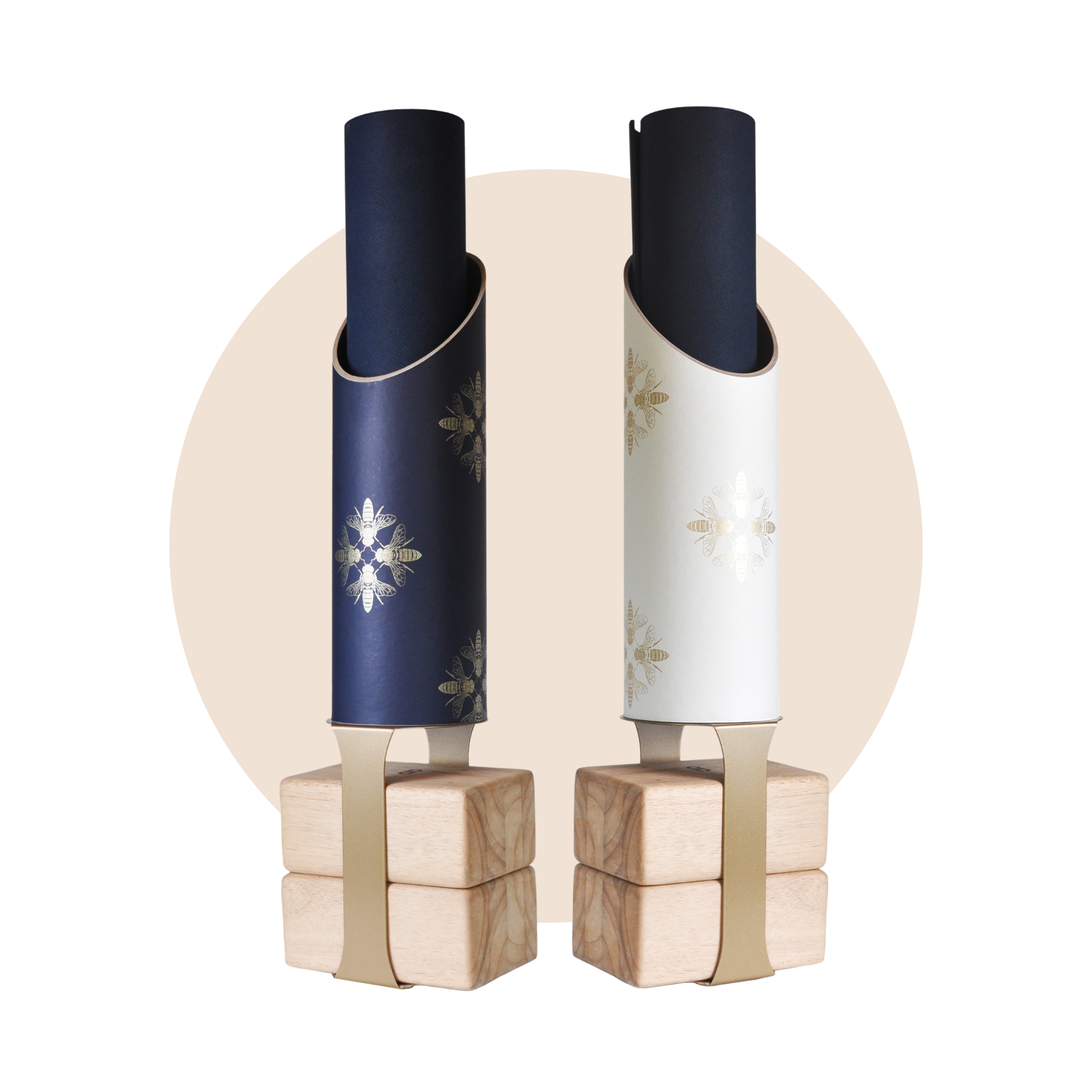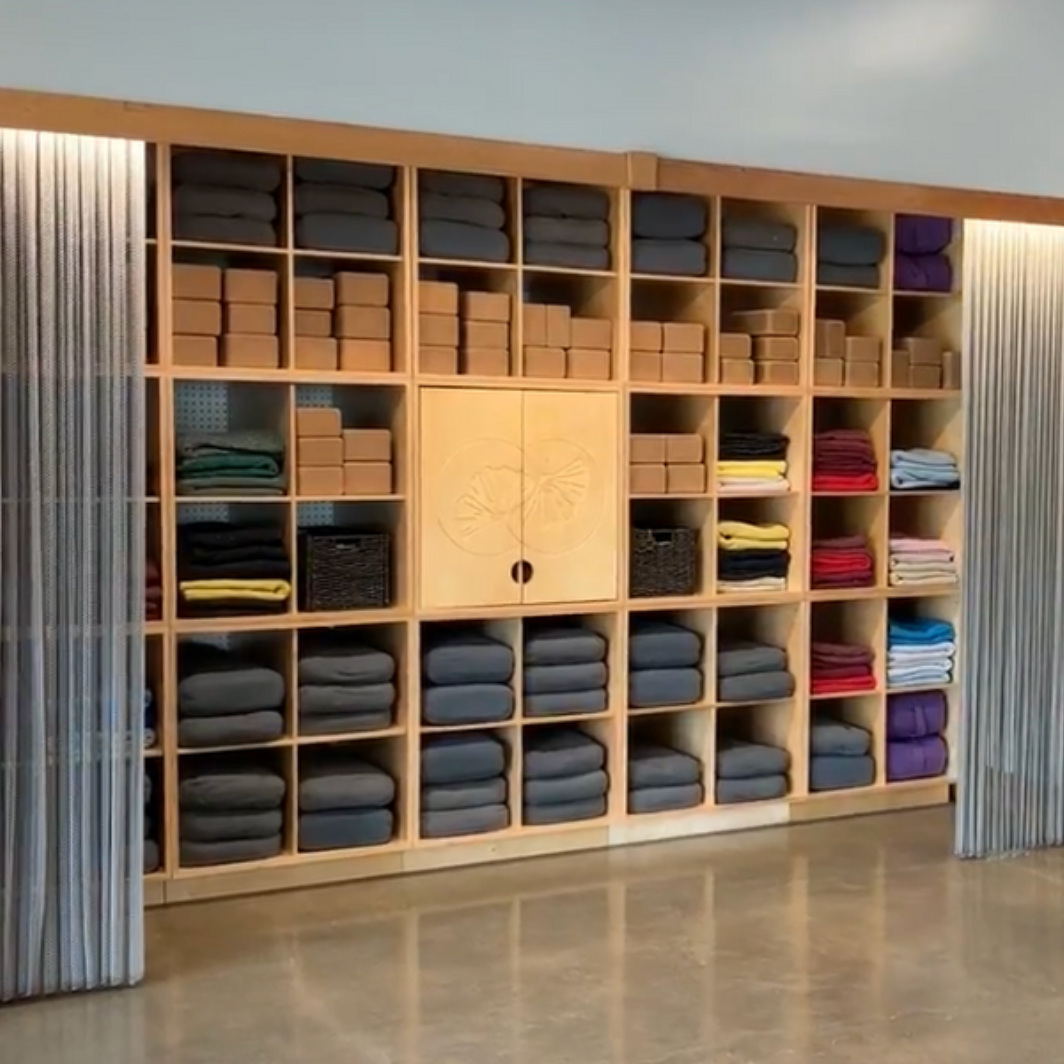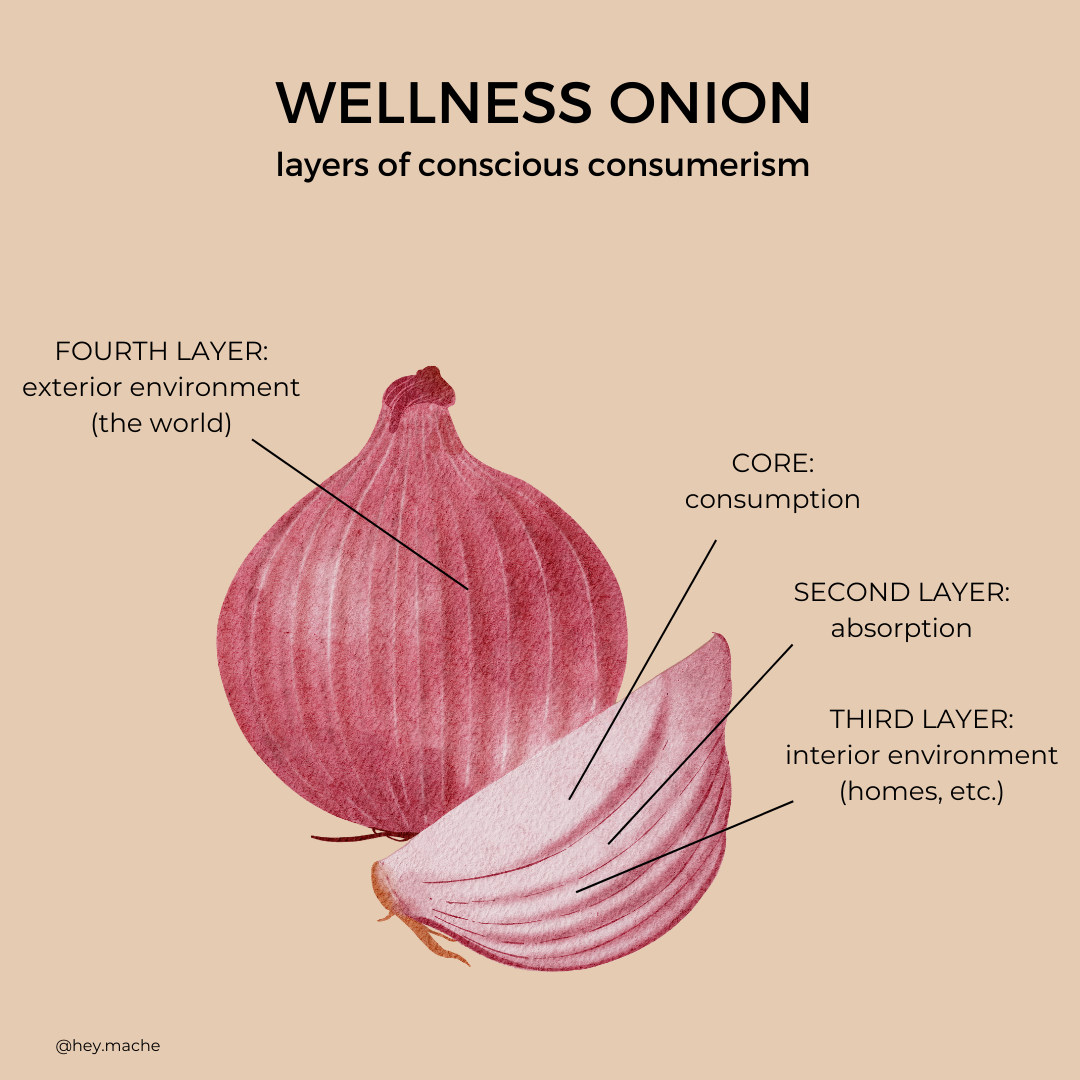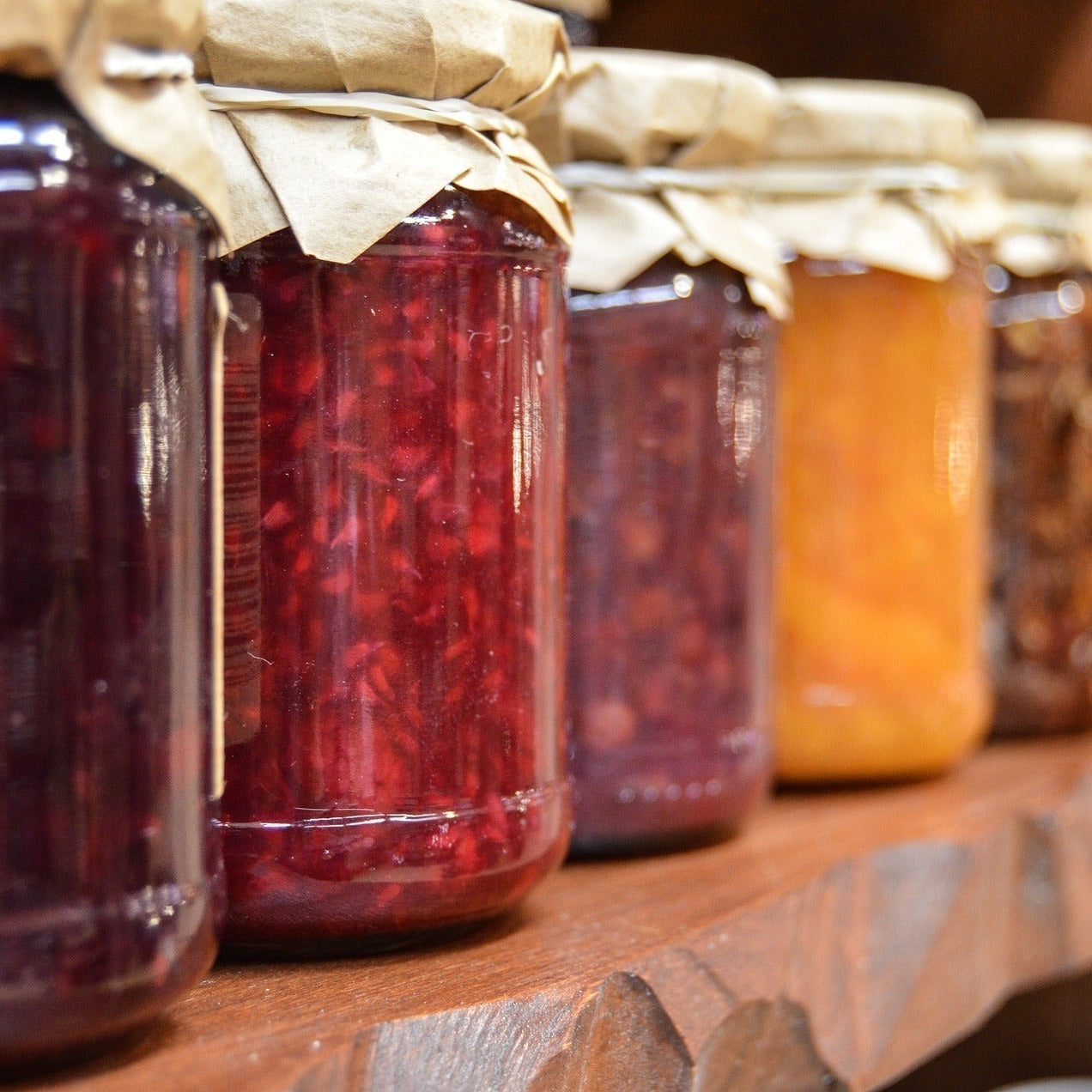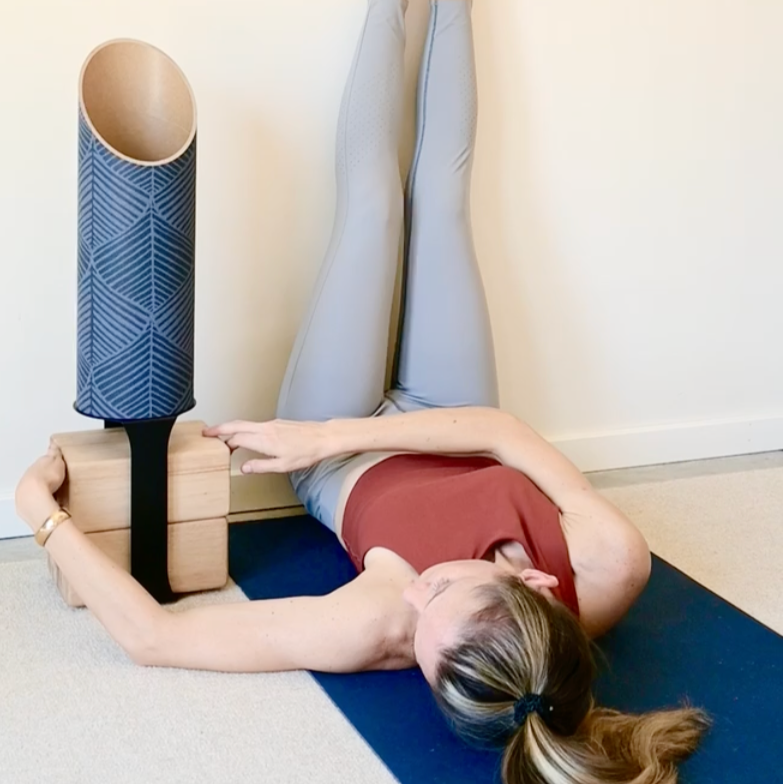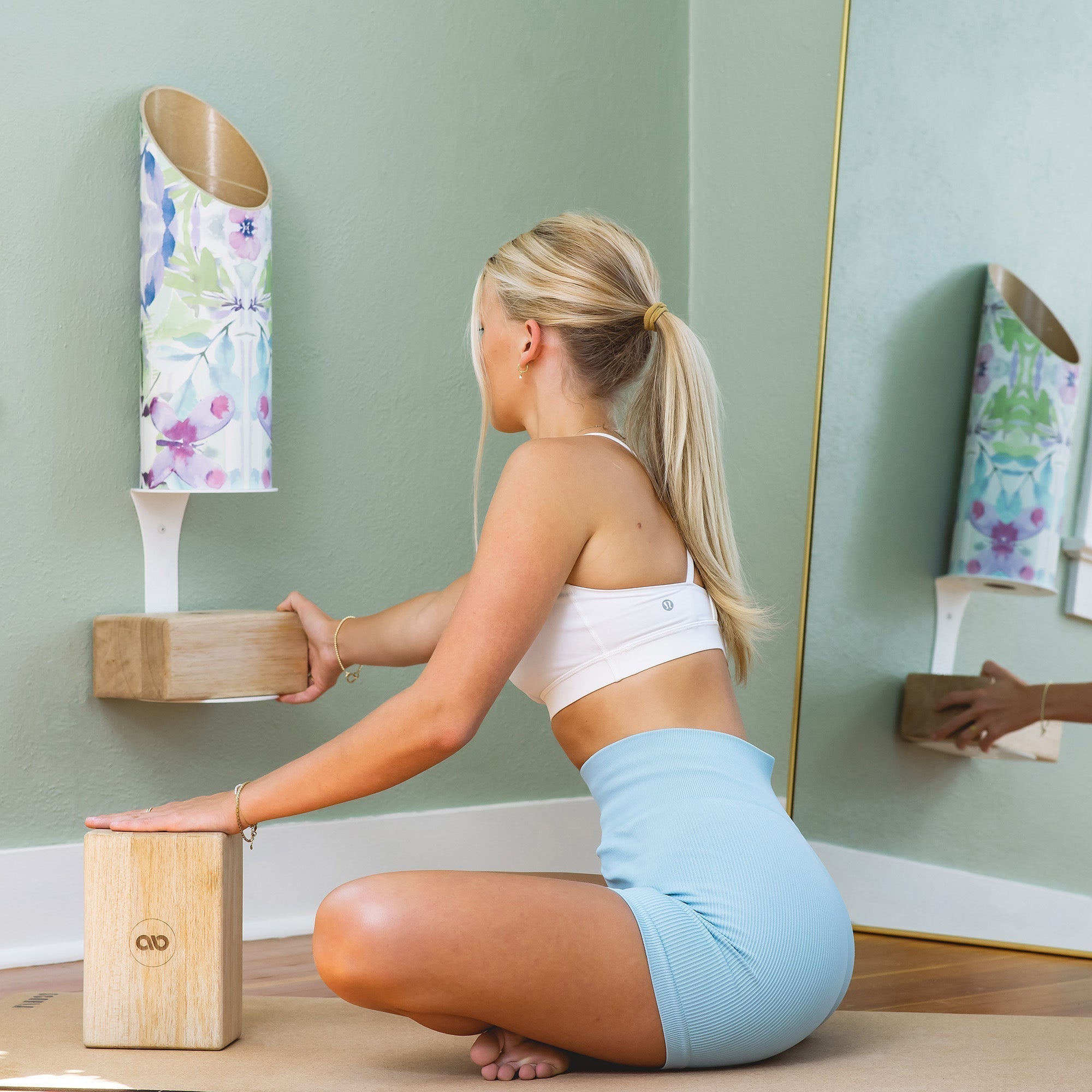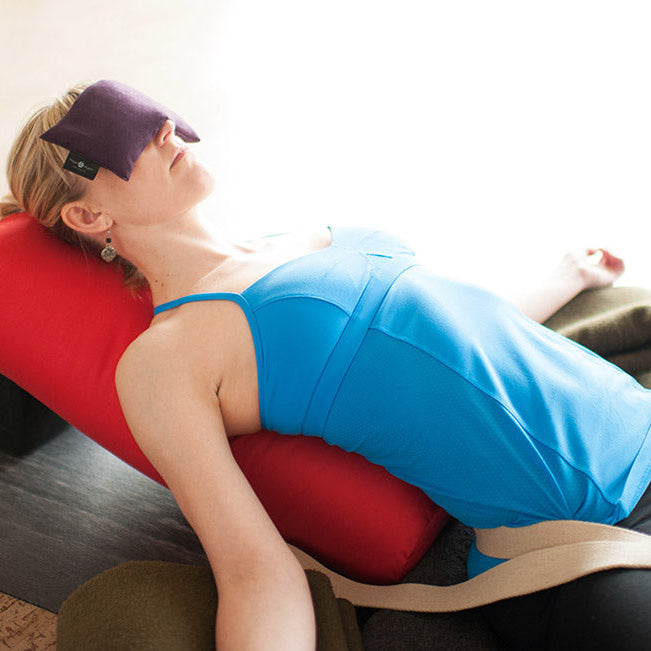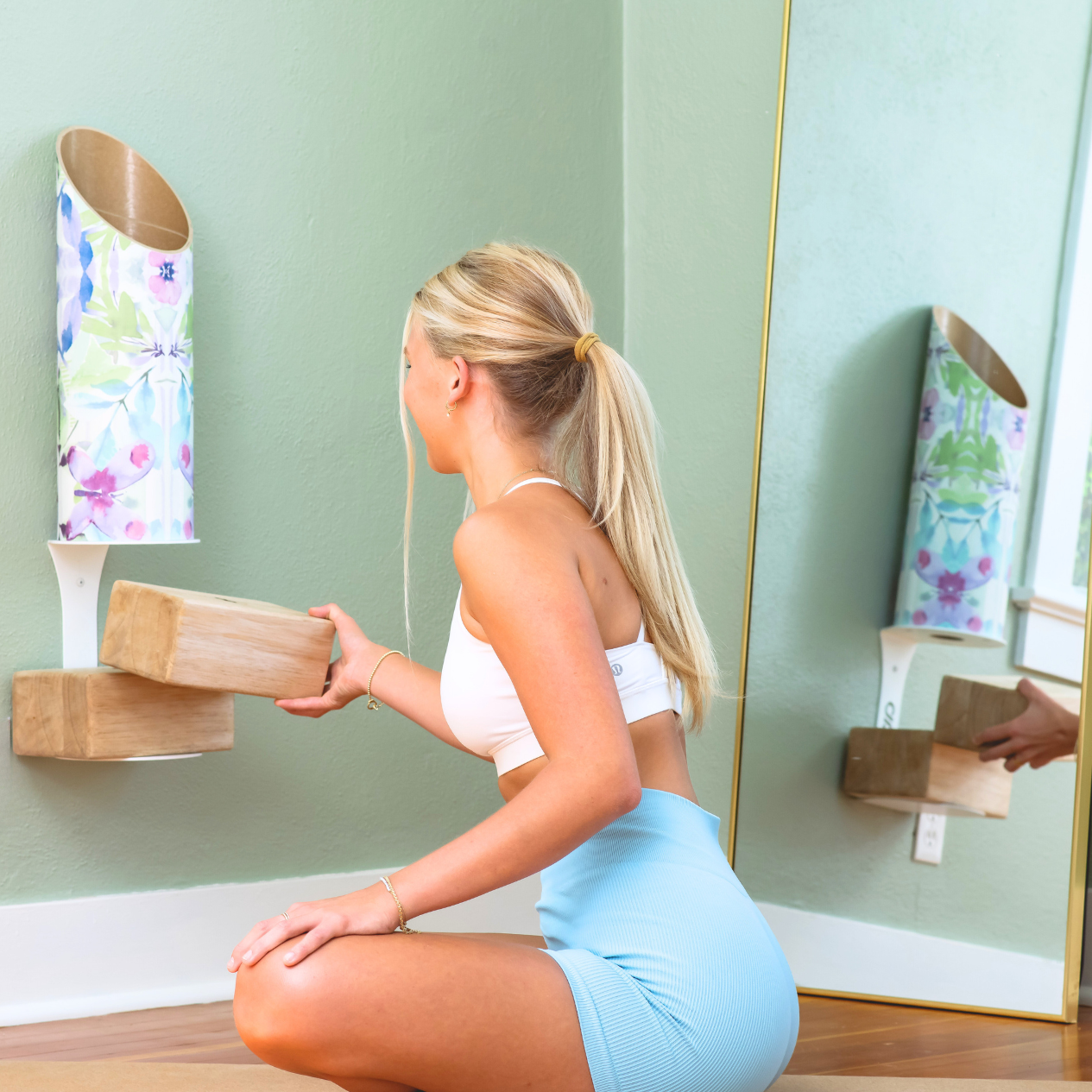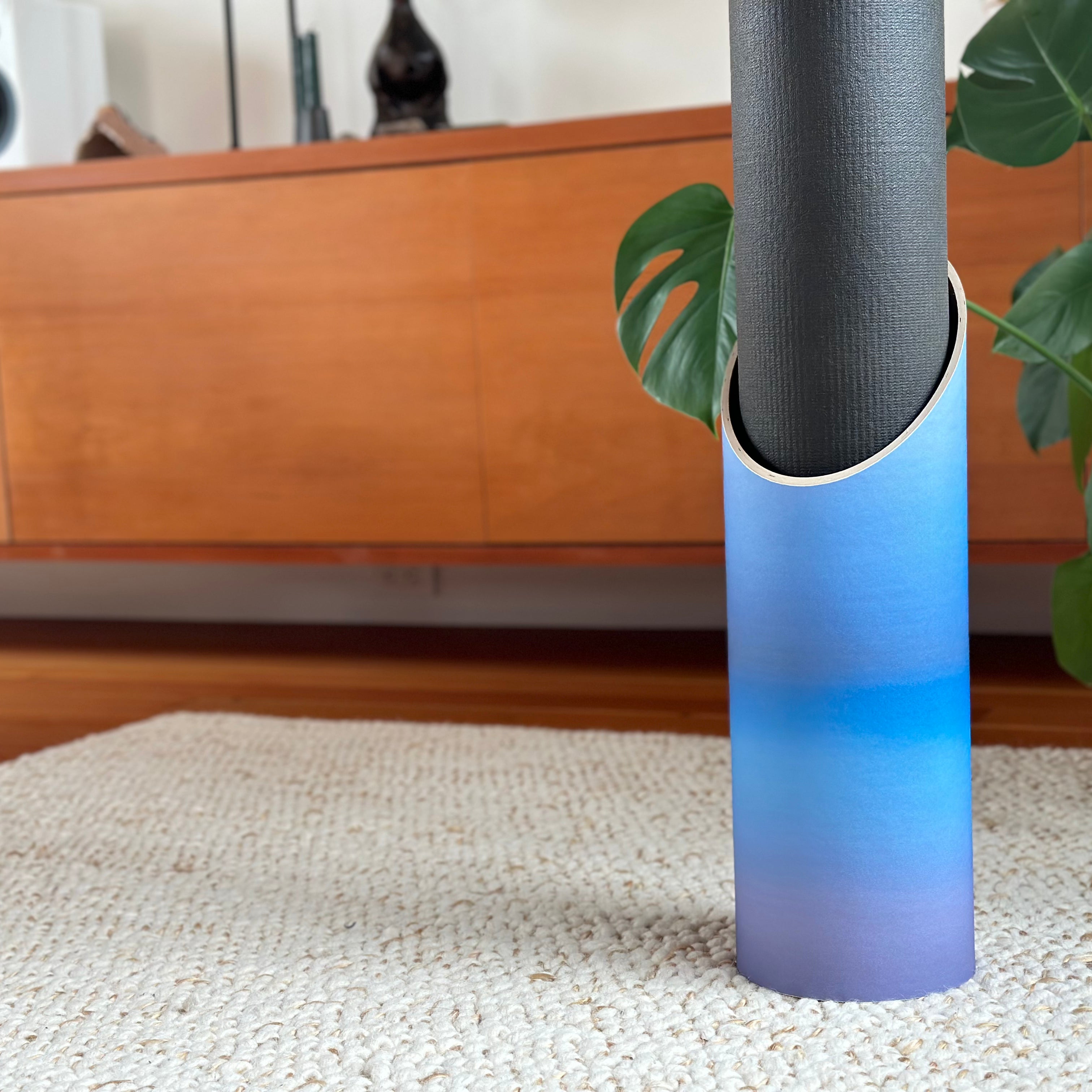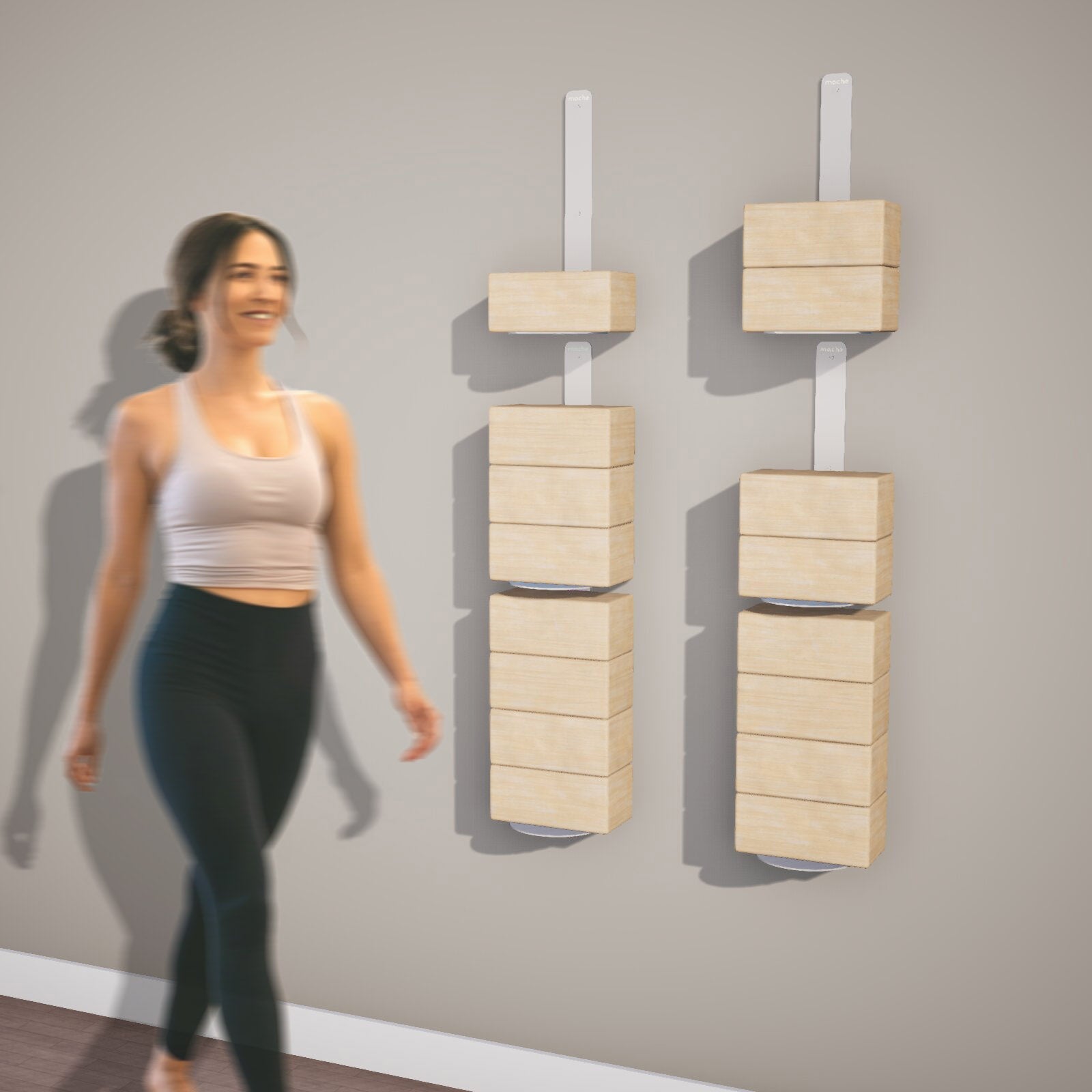At Mache, we make it our central mission to celebrate non-toxic, natural materials and encourage eco-friendly manufacturing and sustainable business practices within the product design industry. As a wellness-centric design firm and a small manufacturer of yoga storage products, we have especially high standards when it comes to the material content and sustainable qualities of yoga and fitness products. As avid yogis, we want to make sure that the everyday tools of the trade, the same tools that we reach for in the cultivation of healthy habits, are made without inflicting harm on others, including the planet, and thus aligned with values of Earth sustainability.
As self-proclaimed experts in both yoga mat usage and green product design, we are here to help you narrow the yoga mat field.
The Most Sustainable Yoga Mat of 2021!
Are you ready to invest in an eco-friendly mat that is not only right for your practice but aligns with your values too? It is well known that many fitness products, including the majority of yoga mats, are made with plastics that contain chemicals that are harmful to people and the environment, such as hormone-disrupting plasticizers, cancer-causing preservatives, and water polluting dyes. To better understand the range of yoga mat materials on the market today and how they rate in terms of sustainability features, read our recent article What Is In My Yoga Mat?
There are a myriad of considerations to weigh when evaluating products for their eco-friendly merits. When selecting the best sustainable yoga mat of 2021, Mache developed multiple evaluation criteria including the mat’s ingredients, or materials, the supply chain and manufacturing processes, and the company's shipping practices. But there are other aspects, less tangible, that are also critically important for a quality yoga mat, such as the sensory delights and functionality of the mat.

MATERIAL
The materials used in the manufacturing, or product ingredients, of the yoga mat is a primary focus for this part of the comparison. It is surprising that the yoga mats we enjoy today are a relatively new innovation. Although yoga mats date back to ancient India and were usually made from animal skins, the first modern mats emerged in the 90’s and were initially made from PVC (polyvinyl chloride) and other chemicals which have been found to be toxic to humans and the environment. The subsequent evolution of mat manufacturing finds a multitude of different materials being used today with varying degrees of sustainability, such as jute, cotton, hemp, natural rubber, cork, eco-polyurethane, and eco-polyester. When investigating the sustainable features of a yoga mat material, we look into how the material was harvested, whether it is natural, renewable in nature or is made from a significant amount of recycled content.
PRODUCTION
Equally important in our evaluation was taking a hard look at the manufacturing processes employed in the production of the yoga mat. You can start with the most environmentally sound materials, but if the construction of the mat uses harmful chemicals, produces destructive emissions, or harms employees, then sustainable practices have been ignored resulting in a poor product choice for today’s conscious consumer. The winners of this year’s contest were yoga mat companies that made deliberate efforts in no/low-waste manufacturing, energy conservation and optimized supply chain logistics all in the spirit of swiftly moving the needle towards green global manufacturing.
PACKAGING & SHIPPING
The choices a company makes surrounding their packaging and shipping protocols can make or break their credibility as an eco-conscious brand. Imagine you are excited by a company’s commitment to eco-friendly materials and processes, only to have your mat arrive wrapped in plastics and non-recyclable packaging? In contrast, leading eco-companies are dialed into their carbon footprint and may even limit their overseas bulk shipments to once or twice a year. Some thoughtful retailers choose to limit or eliminate returns, encouraging their customers to become certain before spending and thereby decreasing the needless transportation of goods. Additional notable sustainable traits in the shipping and packaging category include no/low-waste packaging design, recycled and recyclable packaging materials, and energy-saving shipping logistics measures.
LIFECYCLE
So now you’ve found the mat of your dreams, but what happens when you pour yourself into your yoga practice and your mat begins to lose its functionality or good looks as a result? The average lifespan of a yoga mat hovers around 5 years, depending on the materials and use frequency, of course. Eventually, we will all need to say goodbye to our mats. And, then what? Some companies offer incentives to send yoga mats back to the company in exchange for a deep discount on future yoga mat purchases. Some focus on the biodegradability of their mats in landfills, where most yoga mats go to retire, while others offer you a list of ideas of how you can repurpose your discarded mat. Check out our collection of 15 Creative Reuse Ideas to Give Your Mat a Second Life.
COMPANY INITIATIVE
We asked companies to share their company initiatives around sustainability and were pleased that almost every company had implemented in-house policies for employee health, regular outreach to their community, or donations to environmental and humanistic causes. Those who had not, were new companies still gaining a foothold, but had big dreams of giving back when they were financially viable.
SENSORY DELIGHTS
Lastly, we were sure to indulge in the usual sensory delights of the yoga mat experience. Does it look good, smell good, feel good? Is it heavy or light-weight? Does the mat have good grip or does it feel good under foot and to the touch. As experienced yogis, we realize the answers to these questions are very subjective, as a pleasing smell to one, may not be the same for another. What if you are allergic to latex rubber or don’t care for its odor? With a myriad of different types of yoga and an equally vast array of yoga mat options, one may opt for a mat best suited to their practice and stylistic preferences.
For this comparison study, we categorize the candidate mats into the following three distinct material types: cork hybrids, textile hybrids, and rubber (including natural and synthetic). We then scored them on the above mentioned categories using the 5 star method with 5 stars indicating excellence. We have awarded one overall winner for the 2021 Best Sustainable Yoga Mat and three runners-up in each material category.
The first place winner is...

Oko Living
Oko Living’s mission is to help yogis reach their highest wellness potential through natural, ethical and regenerative design that is earth-friendly. From the moment the Herbal Yoga Mat arrived we were intrigued! All the packaging is plastic free and made of recycled content, recyclable or compostable. The mat itself came rolled up inside a beautifully hand-dyed carry bag, along with natural soap nuts to aid in the cleaning process. With proper care, this mat can last a lifetime and is fully biodegradable.
The Chakra Energy Herbal Yoga Mat is a delight for the eyes- with each of the 7 chakras represented by its corresponding color. Oko Living also carries solid colored mats in luscious herbal hues. Each mat is hand-loomed with GOTS certified cotton which uses 91% less water than nonorganic cotton, 62% less energy to produce, and cannot be grown with chemicals negating any chemical runoff.
Natural dyes derived from Ayurvedic plants are used (synthetic dyes are the #2 water pollutant) in an ancient process that preserves the bioactive medicinal qualities of the plants and is healthy for our skin, immune system, and stress levels. Oko Living practices cradle-to-cradle permaculture methods and their herbal dye wastewater and pulp is used in the herb gardens where plants are grown and then processed into fabric dyes. Because the entire process is done by hand, there is little machinery or electricity used. The eco-nerd in us is impressed!
Not only is the yoga mat gorgeous, but there is no discernible odor, and we were amazed at the luxuriously soft, woven feel, complete with rope-like ribbing for the hands and feet to avoid slippage during asanas, or yogic postures. It even gets grippier as you sweat! The mat performs well in heated practices, as the cotton breathes and stays cool, but doesn’t get wet with sweat, as it can absorb one fifth of its weight before feeling damp.
We were gratified to learn that Oko Living offers artisan women fair wages, safe and healthy conditions, and aids the artisans in keeping their vibrant traditional knowledge and skills alive. In 2021 they donated a portion of their sales to GiveIndia.org for COVID relief and TurningGreen.org which focuses on climate justice and environmental sustainability.
Breathe deeply with this mat and know that what you are breathing in has health benefits for your mind, body and the whole planet!
Runner-up winners of each yoga mat material category:

The Ritual Rug, from the Pacific Northwest company Ma Wovens is the Runner Up Winner of the Textile Material category. Their mission is to celebrate, share, and invigorate the ancient hand craft of weaving. They collaborate with established, international weaving cultures and design innovative, sustainable, and versatile products that support a mindful lifestyle. They work with generational weavers in Northern India and are GoodWeave Certified. Their mats are made from TPE foam, organic hemp, and cotton. We especially like the thick woven comfort during restorative yoga and meditation practice.

In the Cork Material category, the winner is the Alignment Cork Yoga Mat by Urbivore. Urbivore’s mission is to spark habits for change and empower a belief that collectively our decisions have the power to change the world. We were happy to see the mat arrive with recycled, compostable, and plastic-free packaging. All of their yoga mats are made from renewable cork from Spain (currently seeking FSC certification) and natural tree rubber from Thailand. We especially like their method of adhering the two materials together by way of heat and not with the use of harmful chemicals or adhesives. Urbivore collaborates with One Tree Planted and facilitates the planting of a tree with every purchase.

Lastly, the Harmony Yoga Mat has won this year’s Rubber Material category. JadeYoga’s stated mission is to provide eco-friendly yoga mats, share yoga, to remain American-made, and to give back to the Earth. Additionally, for every mat sold, a tree is planted. So far, the company has facilitated the planting of 2,224,440 trees! JadeYoga’s mats are made from natural rubber and contain no PVC or other synthetic rubbers. The product packaging is simple, clean, and green. Although the styles may be limited (bold solid colors only), the superior grip and biodegradable features of this mat make it an eco-no-brainer!
Our team has truly enjoyed receiving, unpacking, and practicing with the world’s leading sustainable yoga mats and we would like to extend a warm thank you to all the inspiring and innovative companies that entered this year’s contest. We are very impressed with the thoughtfulness, determination, and creativity that each of them has exhibited in the pursuit of a greener world for yoga and fitness. We applaud their dedication to continually improve on sustainable materials, production, packaging, shipping, and company initiatives.
We encourage all wellness brands to join the movement to embrace sustainable practices, conscious company policies, and circular economies in order to meet the needs of an ever growing number of yoga and fitness enthusiasts demanding eco-friendly products. In the meantime, and as technologies, materials and designs evolve, we look forward to reviewing sustainable innovations in the yoga mat industry next year, in Mache’s second annual Best Sustainable Yoga Mat Contest!
Until then, practice now, practice often, and be well 🙏
Friends don’t let friends inhale harmful chemicals on the mat. Share this blog with your friends and family on social media, so we may inspire more people to embrace sustainable living where it matters most.

